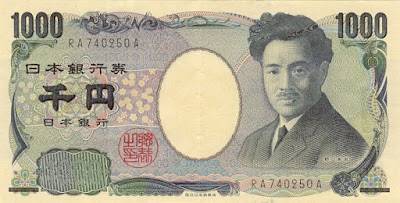October 14, 2015
On my 4th day in Japan, I traveled from Osaka to
Tokyo via the Shinkansen, or more popularly known as the ‘bullet train’. I got the
JR Pass, a ride-all-you-can badge, which I can use to go anywhere in Japan via
trains and buses under the Japan Railways (JR) Group. I purchased the JR pass
in Manila (in Reli Tours and Travel) for ¥29,000 or Php 12,000. It’s
good for seven days, which is fair enough since a one-way Shinkansen ride from
Osaka to Tokyo costs about ¥15,000. I’ve always wanted to try riding a bullet train, so I guess this is worth it. And it was!
Image source: www.darkroastedblend.com
This is how the bullet train looks like inside. The seats are similar to the
ones in the airplanes, although with more leg room and more comfortable. And guess what, there are no seat belts! That's how confident the Japanese are with their Shinakansen technology; zero casualties since its introduction in the 1960s!
At 300 kilometers per hour, this train is indeed as
fast as a bullet. My camera struggled to capture the images, with most vertical
lines becoming slant. The view of Japan’s countryside is nonetheless
breathtaking to look at.
By bus, it would take around ten hours to reach Tokyo (from Osaka), but
via the Shinkansen, it will only take less than three hours, cutting the travel
time by as much as 70%.
We left Osaka at around 12 noon and arrived in Tokyo around
3:00 PM. We stayed at Kai Hostel, which is a really nice backpacker inn located
at the Roppongi area, which is known for its vibrant nightlife and fancy lifestyle. The place is
frequented by foreigners and expats and the vibe is quite similar to the
Salcedo and Legazpi neighborhoods of Makati in the Philippines.
The common areas of the Kai Hostel: the living room, the lounge, and the cafeteria, which offers free breakfast, daily!
My first meal in Tokyo was from Yoshinoya, which is very
different from the one in Manila. In Tokyo, it’s more like a home-cooked meal
rather than a fast-food one. I had salmon and beef yakiniku. Super yummy!
Ivy and I went to Tokyo Tower first, to see the panoramic
night view of the city:
Tokyo Tower was built in 1958, standing at 1,092 feet (333
meters). The elevator can take you to the observation deck at the 250th
meter, offering a breathtaking view of the city. The design was inspired by the
Eiffel Tower in Paris, France and it’s easy to tell why. It is the tallest structure
in Japan until the Tokyo Skytree beat it in 2012. Oh by the way, you have to pay ¥800 just to get to the top. It's worth it! But if you are on a tight budget, go to the Tokyo Metropolitan Government Building in Shinjuku, which is not as high as Tokyo Tower but at least it can give you a bird's eye view of the city for free.
And then we went to Odaiba, an entertainment center built on reclaimed land similar to the Mall of Asia in Manila. We went to see the life-size Gundam, the
Rainbow Bridge, Toyota Exhibit and the Statue of Liberty! Yes, they have it
there! Lol.
Gundam Cafe has the most extensive collection of Gundam merchandise items. The menu also offers Gundam-inspired food, such as the Gundam Wings. Lol. Too bad, the restaurant was already closed when we got there but the shop is still open. I got to buy a Gundam model kit for a friend back home.
The Rainbow Bridge and Japan's Statue of Liberty
Toyota Exhibit
Just before we went home at around 11 PM, we ate again at an
Italian-Japanese restaurant, which I think is a bizarre yet unexpectedly
perfect combination.
My mom always cooks spaghetti when I was young. And she always puts egg on top.
Surprisingly, when we ordered pasta, there’s also an egg on top! Wow, my mom
remembers me on my birthday, even if I'm in Japan! Lol.
Ivy and I ordered two pizzas, three-cheese and a veggie one! By the way, Ivy is also celebrating her birthday on October 15th so it's a double treat!
We also had baked mussels to complete our meal. By the way, we also had salad
but we finished it before I even get to snap it. Hungry souls right there!
This is also the time when I learned something new again about Japan. When I handed over my cash to Ivy, I folded the ¥1,000
bill in front of her, and she gave me a horrified look! Little did I know that this is a big
no-no in Japan! The Japanese do not like their bills to be folded, scratched or
crumpled. That’s probably the reason why the Japanese bills I’ve been getting
are all in mint condition.
Image source: rter.info
Back at the hotel, I got to spend my birthday eve with these fellow
backpackers, whom I just met at the lounge. They were all fun to be with. We drank
beer, played music and talked about our travels and our respective countries of
origin. From left: me, James from Australia, Viviane from Switzerland (who gave me Swiss chocolates, thank you, btw!), this guy
from Belgium (I forgot his name, sorry) and Niall from Ireland.
This is one of the perks of staying at a hostel (as compared to Airbnb) because you get to meet exciting people from all over the world, with each one having a fantastic story to tell.
###

























